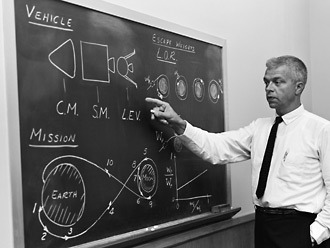Do I support Common Core? Some reflections on #NCTMBoston
What a loaded question! I just got back from the NCTM conference in Boston, and this question is heavy on my mind as we are right in the middle of “testing season” at my school.
I attended some great sessions at NCTM, and I loved the world that master math teachers open up through thoughtful use of the CCSS-M. I really got a chance to explore these awesome multi-act lessons in which a problem situation is introduced, students generate questions, students create a model, and then the students compute and validate their model. I played with some of the lessons here, and here. I really believe in the power of creative problem-solving, and at the heart, that’s what the Common Core standards are about.
There’s a “but” in here. More than one of them. My support for Common Core is not wholehearted or unwavering. I have some pretty serious objections to the current state and direction of math education, and a list has been coming together in my head for a long time. Here it is – just the list of head-scratchers I have with the standards themselves, and this isn’t even related to testing. Whole other list.
1) As the standards progress into late middle school and into high school, they’re increasingly disconnected from real-world context. This bothers me a lot. I have a hard time suggesting that all students need to understand conjugates of complex numbers, solving systems of inequalities by hand, and polynomial identities – with no real-world application implied – before they graduate high school.
2) The standards have never been revised since they were released in 2010. Not once. There isn’t any apparent process for offering feedback or reviewing them. Is it really possible we got it right the first time?
3) There’s almost no mention of technology in the math Common Core. I almost never do math without technology. I scrawl on paper, for sure, but technology plays a key role in the way I use math every day. You could have given these standards to a teacher in 1960 and she would have understood almost all of it.
4) There’s too much in it. You can’t get to a year’s worth of math in a year if you actually want students to understand it well. It forces you to make trade-offs between covering content and teaching for understanding. If you want to do that creative, awesome project with your kids, you have to make some sacrifices when it comes to content coverage. Common Core implies this is the low bar – it’s the base level everyone needs to understand. It has to be doable so you can extend and enrich.
When I read through the standards, I try to create a picture in my head of what a proficient mathematician looks like. What does someone do if they are skilled at all of the “career and college ready” skills listed in the CCSS-M? I think that person does this.

NASA engineer John C. Houbolt describes the Lunar Orbit Rendezvous concept at the chalkboard in July 1962. Image Credit: NASA (from universetoday.com)
Decades ago, Sputnik gave the nation a moment of collective soul-searching. To beat the Russians, we had to win the space race. The smartest, most productive, most important people in this race were mathematicians calculating orbits and escape velocities by hand.
Now I want you to think about the smartest, most productive, most important people in the world today. Think about people who make the world wealthier and healthier. Who move goods and information and improve the lives of people every day. What do they do? How do they interact with math?
For the people listed below, consider these questions.
– What concepts do they know fluently? For what math do they have an easy, accessible mental model that is the base of their problem solving?
– What procedures do they use every day? The single-step or multi-step repetitive tasks that free up your brain for real problem-solving because they’re automatic?
– How are they most likely to model their problems with math?
– How do they validate their models?
Here are the people. Go.

“Package copter microdrones dhl” by Frankhöffner – Own work. Licensed under CC BY-SA 3.0 via Wikimedia Commons
Keep going, think of more. If we do this activity well, we’ll eventually boil this list down to some broad, overarching essential concepts – some really important modeling tools – some key procedures and algorithms. They’ll probably change in a decade or two, but we ought to do ourselves the favor of poking around the real world and seeing what the state of math is right now.
Now consider what would happen if we worked backward from this, the list of 21st century mathematics that successful people use in their lives. Pretend you never knew math had to get to calculus by the end of high school. We could create a curriculum from the ground up.
If we did, would math look like Common Core or would it be different?
Are we trying to stuff 20th century math into our 21st century lifestyle? Do we fundamentally interact with math in different ways? What would a 21st century math curriculum look like?
I think it’s the Grand Challenge of math education today. Really, we ought to take it on.



Recent Comments